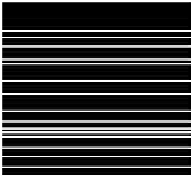Environmental Engineering Reference
In-Depth Information
Biogas
Digester
T = 55-60°C
T = 55°C
CHP
Standard
70/90°C
cycle
Preparation
buffer tank
Storage-post-
treatment tank
T = 30-45°C
Q
R
T = 30-35°C
T = 10-20°C
FIGure 32.11
Heat regeneration.
more stable digested substrate, smaller digesters, pathogen removal, etc. There are substrates that
require extensive pretreatment; especially this is the case for lignocellulosic material (like spent
brewery grains) that require energy intensive pretreatment to be successfully digested at all. In such
cases, the energy loss for pretreatment must be accounted for in the energy production. In many
cases it cannot outweigh the economy of the process; it may well happen that the parasitic energy
demand is too high.
32.4
WasteWater treatment
32.4.1 a
griculturE
w
aStEwatEr
t
rEatmEnt
The different types of contamination of wastewater require a variety of strategies to remove the
contamination.
32.4.1.1 solids removal
Most solids can be removed using simple sedimentation techniques with the solids recovered as
slurry or sludge. Very fine solids and solids with densities close to the density of water pose special
problems. In such case, filtration or ultrafiltration may be required. Alternatively, flocculation may
be used using alum salts or the addition of polyelectrolytes
32.4.1.2 removal of Biodegradable organics
Biodegradable organic material of plant or animal origin is usually possible to treat using extended
conventional wastewater treatment processes such as activated sludge or trickling filter.
Activated sludge is a biochemical process for treating sewage and industrial wastewater that uses
air (or oxygen) and microorganisms to biologically oxidize organic pollutants, producing a waste
sludge (or flock) containing the oxidized material. In general, an activated sludge process includes:
• An aeration tank where air (or oxygen) is injected and thoroughly mixed into the wastewater.
• A settling tank (usually referred to as a “clariier” or “settler”) to allow the waste sludge
to settle. Part of the waste sludge is recycled to the aeration tank and the remaining waste
sludge is removed for further treatment and ultimate disposal.























































































































